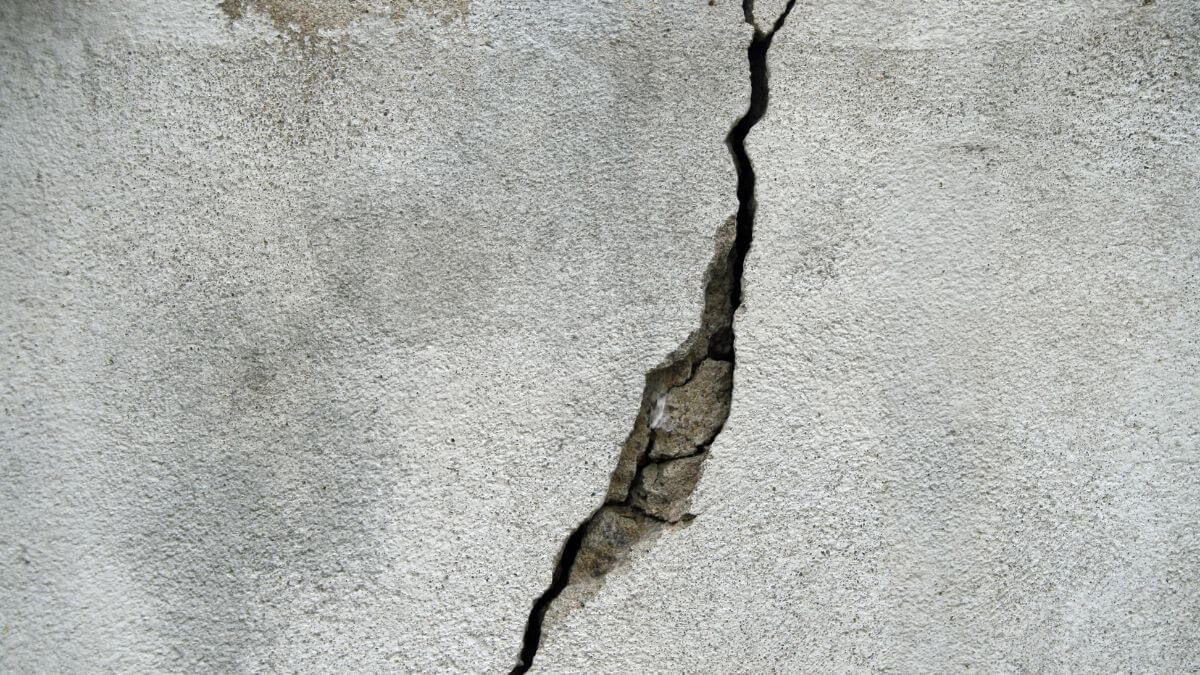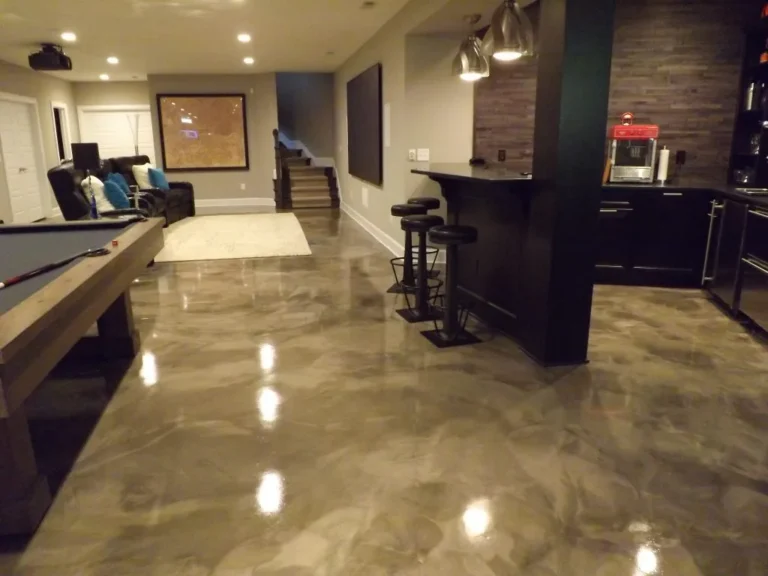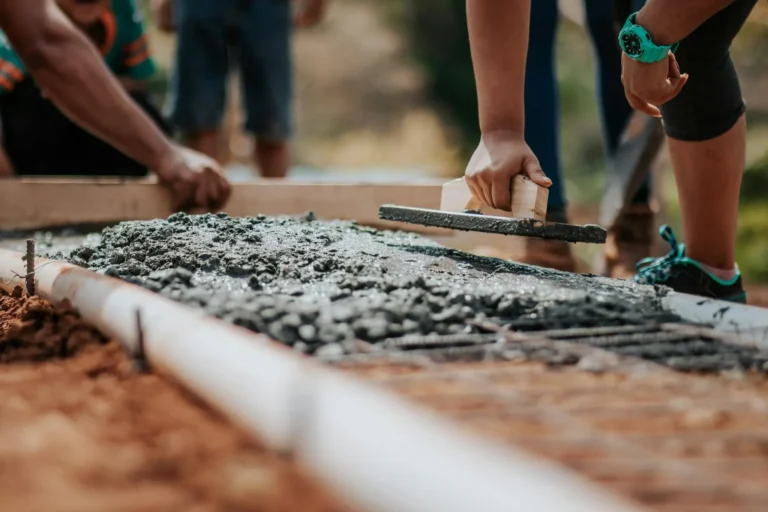Concrete is used as the base material for all modern construction projects because it provides strength and flexibility and maintains its durability when installed properly. Yet, even the most expertly poured slab can develop cracks over time. The residents of Northern Colorado experience a common sight that causes them great frustration. People start to question construction issues when they find cracks in their newly built driveways or older patios. Concrete cracking emerges from multiple causes that extend beyond construction faults because it represents only one of several factors.
In this post, we are going to shed some light on the reasons why concrete may crack and what you can do about it, including availing professional services.
Reasons behind Concrete Cracks
There are three main components of every concrete surface, namely cement, aggregates, and water. The process of hydration in concrete causes water to evaporate while the material undergoes minor shrinkage during hardening. The slab develops cracks when the internal tension from shrinkage becomes greater than its strength capacity.
The fast-changing weather patterns of Northern Colorado create additional pressure on concrete structures because temperatures shift from warm days to cold nights. The surface of the material experiences degradation because of the continuous expansion and contraction that occurs when temperatures change. The combination of thermal movement with wind and low humidity, and direct sunlight exposure results in hairline cracks to appear during the initial weeks of installation.
Soil movement is also a responsible factor for concrete cracking. Fort Collins, Loveland, Windsor, and Greeley have soil with clay content that expands when it gets wet and shrinks when it becomes dry. The uneven base pressure distribution leads to the development of visible cracks in the slabs. The combination of improper base compaction and poor drainage systems leads to accelerated cracking rates.
Types of Cracks and What They Mean
The appearance of all cracks seems identical when viewed from a distance, but their origins and levels of damage differ. Hairline surface cracks are the most common and typically result from normal shrinkage as the concrete cures. These fine lines rarely affect strength or durability. The presence of large cracks suggests that the base layer has moved or that the surface is under too much weight. The process of frost heave occurs when water beneath the slab freezes and expands, which leads to the concrete section lifting and separation after the ice melts during winter.
Most of the cracks seem minor, and yet some of them do evolve into structural problems. This concrete slab has not been adequately reinforced, as control joints remained in positions that made the material rigid for handling internal stress. Cracks in the material gradually open further to allow the entry of water, and can develop further damage when freezing and thawing take place.

Why Northern Colorado Area Experiences More Concrete Cracking
The climate and soil conditions of Northern Colorado provide special challenges for concrete durability. Its semiarid weather implies dry air and strong sunlight that pulls moisture out of fresh concrete too quickly. Evaporation of water from concrete surfaces causes drying to start prior to proper curing time, resulting in weak concrete surfaces.
The structure receives additional damage when freeze and thaw cycles repeat during the late fall and early spring seasons. Water enters the snow cracks and empty spaces during daylight hours before freezing again at night, which causes these spaces to become bigger. The repetition of this growth cycle over successive winter seasons causes deterioration of even properly laid concrete slabs.
Additionally, Larimer and Weld Counties have quite a lot of expansive clay soils. These soils are capable of increasing their volume by as much as 10 per cent when saturated. In instances where concrete is directly poured onto an unprepared subgrade, expansion and contraction movements will lead to repeated lifting and dropping of the slab surface, thus causing uneven surfaces and unsightly cracks.
How Professional Installation Prevents Cracks
The process of concrete cracking prevention should begin with the initial production phase of cement. The process of concrete production at Hugo’s Concrete involves experienced contractors who follow established procedures to minimize stress and improve their projects’ long-term durability.
Every enduring construction needs a correctly prepared sub-base as its fundamental base. The team starts by removing soft or organic soil before putting compacted Class 5 road base material down to a depth of four to six inches. The system provides two functions that include drainage capabilities and consistent structural base support. After compaction, the surface is finished to create a slope that directs water away from buildings so it does not accumulate under the slab.
Construction depends on the reinforcement, which represents an essential element. Concrete shows excellent performance under compression forces, yet its tensile strength remains weak. The structural integrity of buildings receives protection through steel rebar and fibre additives that serve as countermeasures to these issues. A rebar grid with spacing between eighteen and twenty-four inches provides residential driveways with proper strength distribution.
The mix design also matters. The contractors operating in Northern Colorado select concrete with 4000 to 4500 PSI strength and air entrainment features to handle freeze–thaw conditions. A low water to cement ratio reduces shrinkage, but the addition of additives improves workability and enhances surface finish quality. The concrete surface receives control joints through cutting, which directs natural micro-cracks to develop along planned straight pathways instead of creating random crack patterns.
The process reaches its end stage through the application of professional curing and sealing techniques. Concrete needs several days to reach its full strength while maintaining water content during this period. The application of curing compounds or wet coverings helps to slow down the process of water evaporation. The surface protection system requires a penetrating silane-siloxane sealer to defend against water infiltration and oil and de-icing chemical damage after the curing process completes. The preventive measures protect the slab from major cracking for the next several decades.
Practical Steps Homeowners Can Take When Concrete Cracks
The correct installation process handles most of the work, but homeowners should perform certain maintenance tasks to increase the life expectancy of their concrete surfaces. Sealing every two to three years protects the material from water intrusion, which also stops freeze damage from occurring. Homeowners need to avoid salt-based de-icers in the winter that cause corrosion and surface damage since sand and calcium magnesium acetate provide safe traction without chemical damage.
Drainage maintenance is an elemental need. The water discharge at the downspouts and sprinklers must be directed away from driveways and patios to avoid the accumulation of water beneath the slab. Any small patch of standing water, once the temperature has fallen, can also cause frost heave. The surface must be cleaned on a regular basis using mild detergent, followed by a gentle rinse, in order to prevent damage to sealers besides avoid the creation of stain formation. Sealing hairline cracks using flexible concrete caulk at early stages prevents water intrusion that leads to freezing inside the cracks.
When Is It Time to Call a Professional?
Minor surface cracks do not need quick action, but homeowners must get expert evaluation when they see irregular floor levels, expanding spaces, and noticeable shifts in their homes. The symptoms indicate underground movement that will get worse when left unaddressed.
The team at Hugo’s Concrete provides evaluation services to determine if lifting, patching, or full replacement is needed for the problem before additional damage occurs. The early start of operations leads to time and cost reductions.
The Long-Term Perspective
Concrete always experiences slight movements when exposed to pressure and temperature changes and over extended periods. The path to lasting success requires mastering movement control rather than trying to stop it completely. Homeowners who understand concrete behavior and hire certified experts experience reduced problems with their installations, which also extends their lifespan.
The people who live in Fort Collins, Loveland, and Windsor and nearby regions must choose a contractor who knows local soil behavior and weather patterns to stop cracks from forming. Hugo’s Concrete delivers Colorado-specific solutions through their field-tested experience, which enables them to select proper materials and reinforcement systems, and drainage solutions.
Concrete possesses limited resistance to destruction, yet proper design and maintenance will allow it to maintain its beauty and functionality across multiple generations. The next time you see a small crack, remember—it’s not a flaw, it’s a feature of nature’s most dependable building material, and with the right care, it will stay strong for decades.





